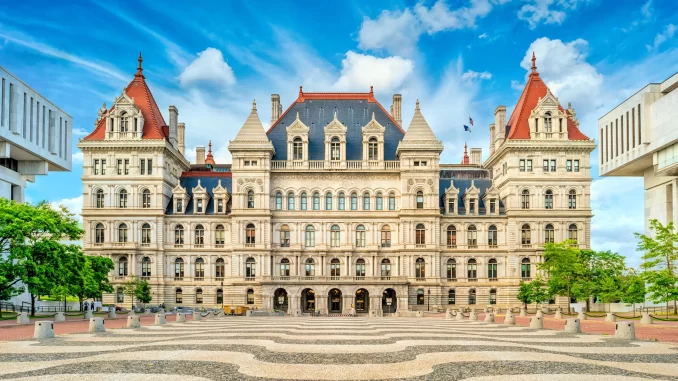
By Steve Levy
As the state legislature puts the finishing touches on the 2025–26 state budget, the final outcome must be looked at through the prism of both politics and policy.
From the political perspective, Governor Hochul had her best budget yet. That’s because the major issues of contention were all driven by the governor. In her past budget processes, she was seen as a passenger in the car driven by state legislative leaders.
Hochul championed easy-to-sell, mom-and-apple pie proposals such as the cell phone ban in schools. Other proposals, such as discovery reform, mask bans for protesters, and providing greater ability to confine the mentally ill, were all measures generally supported by the public. Though the budget came in late, most residents will probably give Hochul a pass because they saw her fighting for her causes that they mostly agreed with.
So she’ll probably get a bump based upon the coverage of the process.
On the other hand, the policy was yet another clunker. The primary negative within the budget was its sheer size. New York’s budget is now a whopping $254 billion. This is an enormous 47% increase from just before the pandemic when the budget was a mere $173 billion. To put this into proper perspective, the state of Florida, which has 3 million more people and no state income tax, has an overall budget of $115 billion.
This budget spending free-for-all proves again why New York State needs a spending cap. Over the last five years, 30,000 New Yorkers have fled to South Florida, bringing with them $9 billion that would otherwise be sitting in New York.
Another policy clunker was yet an additional tax on businesses within the metropolitan area to pay for the MTA’s insatiable spending appetite. Last year, Long Islanders were spared from this tax increase as applied to New York City, but this year, higher-earning companies will have a near doubling of their MTA payroll tax. Small companies will have a cut in the tax they owe to the MTA, but overall, it’s a significant increase coming from Long Island businesses. This is proof positive that the Center for Cost Effective Government’s suggestion that the MTA be placed under a financial control board is long overdue.
As to the other policy initiatives, the jury is still out as to whether they will be effective. The mask ban is not what the governor wanted. It’s a compromise that only allows police to arrest protesters for donning a mask if they are first accused of a significant misdemeanor. That’s far more restricted than the mask bans that were in place before Covid.
The DA reforms are better than nothing, but they didn’t go as far as what the district attorneys’ association wanted. The courts will now have a bit more discretion to determine if the district attorneys are using good faith and will also require the disclosure of only “relevant” information as opposed to the whole file. It’s still a question as to whether this will be enough to get us back to where we were before the 2019 reforms that led to massive recidivism and in a huge dropping of potential cases against violent criminals.
The fanfare around the confinement of the mentally ill may be overblown. The final compromise supplies more money for more beds, but it’s unknown at this point whether there is enough power vested in mental health officials to confine the truly problematic mentally ill on the verge of violence.
The budget was over 30 days late, and the question is whether or not it was worth it. Time will tell.
Steve Levy is Executive Director of the Center for Cost Effective Government, a fiscally conservative think tank. He served as Suffolk County Executive, as a NYS Assemblyman, and host of “The Steve Levy Radio Show.”

